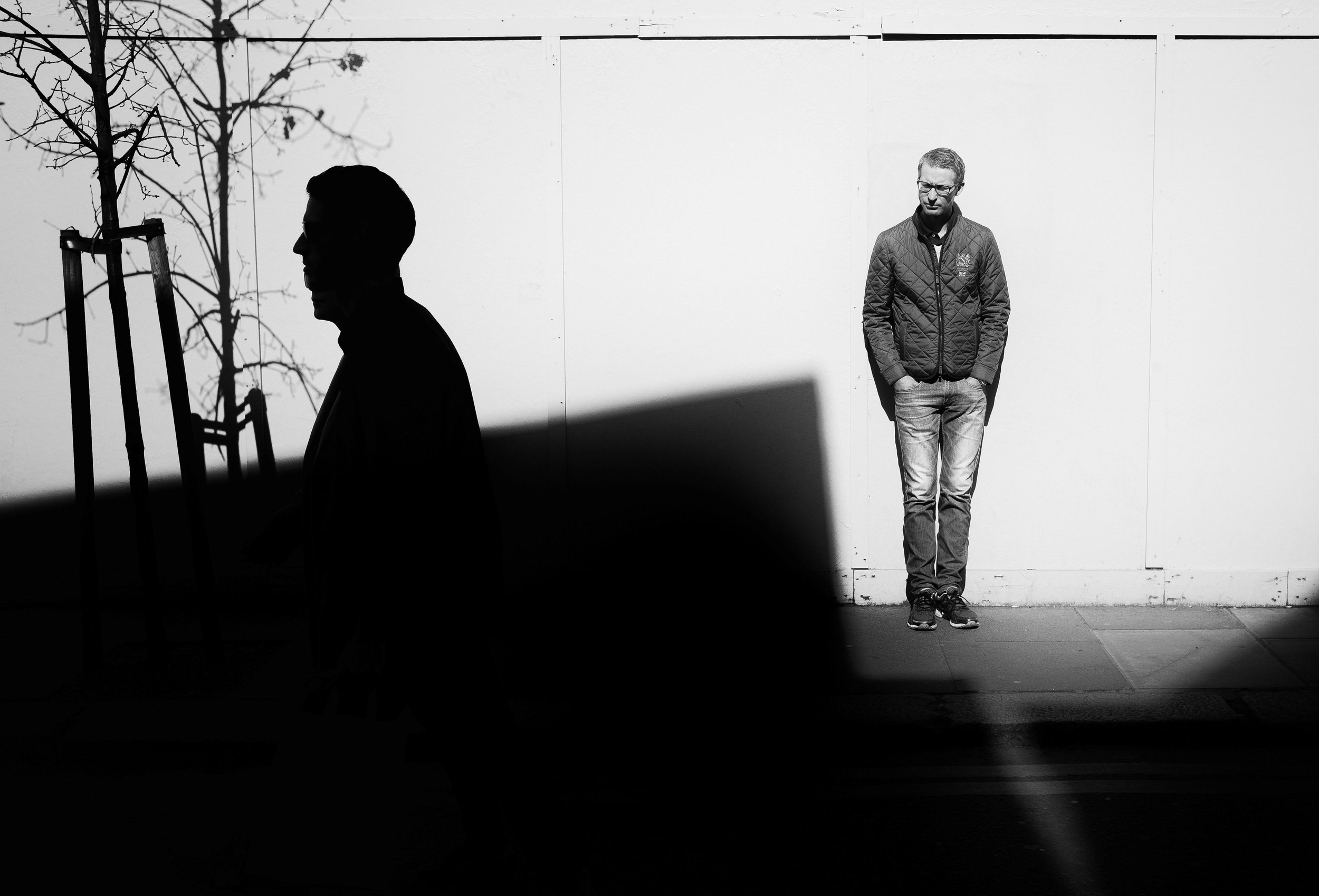What is Strangeness? A sense of otherness. The opposite of common, ordinary, familiar. Strangeness comes out of capturing human beings and the world in a different, unfamiliar light. In this article, I wanted to explore different ways I have evoked a sense of strangeness and otherness in my photography - and through this, introduce possible avenues for you to explore. I hope you will enjoy this reading, and if so, let me know in the comments!
While there are many ways to think of the strange and unfamiliar, in my next series of articles I will discuss five themes that are close to my heart:
2. Introducing shadows as a destabilising element
Shadows can be powerful forces in your photography. When shadows replace human beings or share the frame with them, you can disrupt harmony and create a sense of strangeness in your narrative. Similarly, long shadows can introduce foreign elements in your photography that provoke thoughts and wonders, transform subjects and create tension. Shadows can also hide key elements of humanity - such as the face, creating a mix of seen and unseen, of real and unreal. When shadows are reflected, they can create an entirely new reality of a world mirroring our own only so slightly, yet ever changing and mystifying. All of this can produce strange and unfamiliar scenes that will make you stop and wonder, one image at a time, pondering about the reality of the scene, the nature of these illusions, and their meaning.
1. When people become silhouettes, we start introducing an element of unreal in the image. But when silhouettes and non-silhouette humans co-habit on the same plane, it creates a strong sense of illusion and strangeness, like in this image. These two subjects are close but can’t be further apart at the same time - one in plain sight and clearly visible, looking in the direction of the other, now a mere silhouette passing by in front of him. They seem to belong to two different worlds, with two different suns. While they connect through the gaze of our first subject, we can only wonder what strange effect the camera has captured. The resulting feeling is that of strangeness, of course, but also of isolation and impossibility of connection.
2. And sometimes, humans are replaced by their shadows who take a life of their own, suddenly surrounded by animals and actual, visible human beings. In this image, you can see the strangeness emanating from the shadow-person co-habiting with a much smaller subject in the background, full of light and clearly discernable in the shadow. This is an image that seems almost two-dimensional, therefore not applying the law of physics in its proportions. The co-habitation of a shadow-person with a bird is an additional element of curiosity, adding to the strangeness of the scene in sight.
3. In this image, you have two elements leading to unfamiliarity and mystery: the subject is fully visible yet her face is painted black by the sun, so you cannot actually see her features. The combination of seen / unseen elements in her physical appearance is strange and compelling, bringing us to look at the smallest detail. The background is cheerful, but somewhat astonishing for a city background, while her hair shadow is actually creating a strange element on her left - a distorted dance of elements seeming to run in her direction, disconnected from their source, utterly strange and deceiving.
4. The most famous man in Soho perhaps! Yet the reason to integrate this picture is to demonstrate how hiding the facial features of someone can be disturbing and unfamiliar. In this image, we can visibly discern elements of his costume, hat, and even his glasses where the sun gets reflected, Yet his face in the shadow can be accentuated as to fully disappear - leaving our subject with no face, just a long shadow connecting with the negative space on the left, It makes you question your perception, and the physical reality of this photograph.
5. And finally, an example of reflections in the water. In these photographs, subjects become reflected silhouettes, losing many details and anonymising who they are. In addition, the image is upside down - which the eye can understand because of the reversed pavement on each side. What comes out of this image is a sense of a world that looks almost like ours, but not entirely. It takes a few seconds to understand what we are seeing, and to ‘see’ the dripples of water creating texture throughout this image.
Thanks again for reading! Soon I will be publishing Part 3: Connecting elements to create tension and parallels. So stay tuned.
Have a lovely day!




